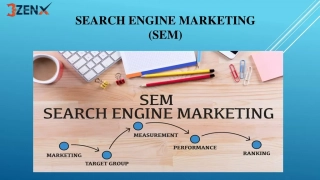
Financial Statement Analysis Methods
Explore the advantages and disadvantages of common-size statements and index number trend analysis, essential tools for analyzing financial statements. Learn how these methods can aid in comparing firms, evaluating financial trends, and supporting decision-making. Understand the objectives, advantages, and limitations of each technique to enhance your financial analysis skills.
Download Presentation

Please find below an Image/Link to download the presentation.
The content on the website is provided AS IS for your information and personal use only. It may not be sold, licensed, or shared on other websites without obtaining consent from the author. If you encounter any issues during the download, it is possible that the publisher has removed the file from their server.
You are allowed to download the files provided on this website for personal or commercial use, subject to the condition that they are used lawfully. All files are the property of their respective owners.
The content on the website is provided AS IS for your information and personal use only. It may not be sold, licensed, or shared on other websites without obtaining consent from the author.
E N D
Presentation Transcript
INTRODUCTION TO FINANCIAL STATEMENTS By, Suryata Pradhan.
COMMON-SIZE STATEMENTS. Advantages: 1. Suitable for comparing firms of different sizes. 2. Suitable for inter-firm comparison 3. Exhibits importance of each items of respective financial statement as compared to the total. 4. As each item of liability in the balance sheet is expressed in terms of percentage, so its easier to understand the capital structure of the co. without any problem. 5. As each item of asset in the balance sheet is expressed in terms of percentage, so its easier to understand the composition of fixed assets and current assets in %.
COMMON-SIZE STATEMENTS. Disadvantages: 1. Not useful for segment-wise analysis 2. Not suitable for intra-firm comparison 3. Does not help in decision making 4. Not extensively used by the analysts as it cannot provide comparative data of different accounting years.
COMMON-SIZE STATEMENTS. Objectives: 1.Analyses the change in individual item of income statement. 2.To study the trend in various items of incomes and expenses. 3.To consider a common base for comparison.
INDEX-NUMBER TREND ANALYSIS. It is an important tool for analysis of financial statements, particularly when the period of analysis covers a long period of time like 3yrs or 4yrs. Analyzing financial data using index-no. trend analysis requires choosing of a base period for all items of the financial statements. In index-no. trend analysis we compute percentage changes by using the following formula Trend percentage= current year s figure * 100 Base year s figure Note: Trend % is calculated not for every item in financial statement but only important items are selected for this purpose.
INDEX-NUMBER TREND ANALYSIS. Advantages: 1.Prompt understanding of the progress 2.Possibility of making inter-firm comparison. 3.Ensure control and decision making. 4.Investment decision. 5.Forecasting of future. 6.Measuring the liquidity and solvency. 7.Useful for comparative study. 8.Measuring profitability position.
INDEX-NUMBER TREND ANALYSIS. Limitations: 1.Inflationary factor i.e. by the factors which cause a rise in the price level. 2.Consistency of business factors: trend analysis over a long period of time is not always meaningful as the accounting policies followed by the entity may have changed over time. 3.Problem in selection of base year: base year should always be a normal year free from any abnormality. 4.Useless in inflationary situation: trends of data which are considered for comparison create misleading results.






















